WOOLGATHERERS GUEST TOWELS IN HANDSPUN LINEN |
|||||||
|
CLICK HERE FOR THE LATEST TOWEL EDITION - SEPT. 2003
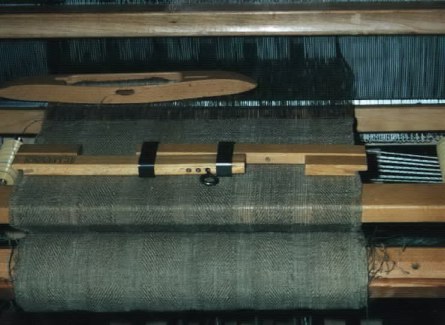 A. Fabric on the loom.
Surprisingly, this warp behaved just like one from commercial linen singles. Sized with laundry starch - to protect the yarn from abrasion and keep hairyness to a minimum - there was only ONE broken warp, tension was quite even, and the mixed sett - 24 EPI for the plain weave and 38 EPI for the twill caused no difficulty.
Naturally this piece called for using a temple - and I chose a damask shuttle that fit through the sometimes narrow shed with little abrasion.
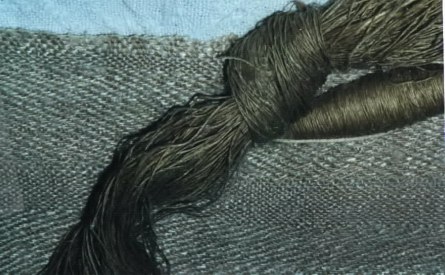 B. Closeup of finished fabric with warp thrum and last weft quill. I doubled the last 4 threads on each side. As the edges were in plain weave, floating selvages were not necessary. Pattern was threaded on 6 shaft - 2 for tabby and 4 for twill.
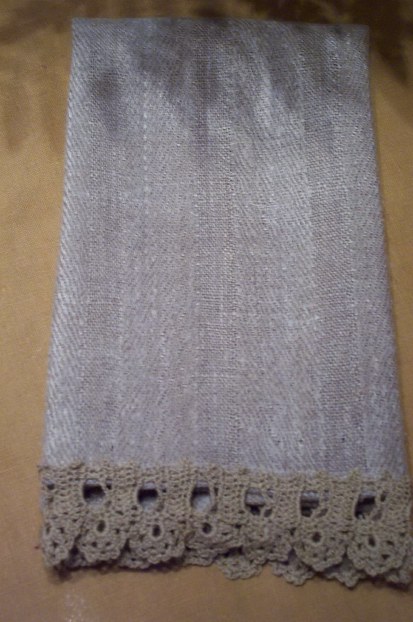 C. Finished towel with crocheted lace trim. Crochet thread is some antique Coats and Clarks cotton - found at an antique shop.
The fabric was finished, first with a hot cycle in my front loader without spinning and hung dripping to dry. Then it was steam pressed. Not quite happy with the fabric, I decided to use the cold mangle that my husband made a while back. Rolled the whole 5 yards around the wooden roller and worked it back and forth for less than 15 minutes (still a tad damp and wrapped in a pillowcase to prevent soiling).
The result is a buttery sheen that impresses even non-weavers.
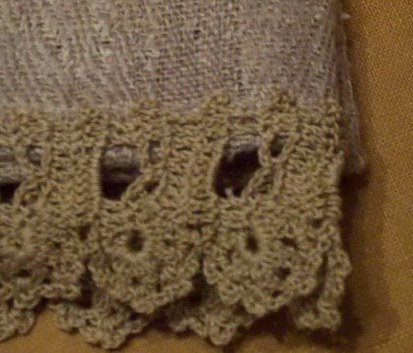 D. Closeup of finished towel.
PCW Drawdown shown below:
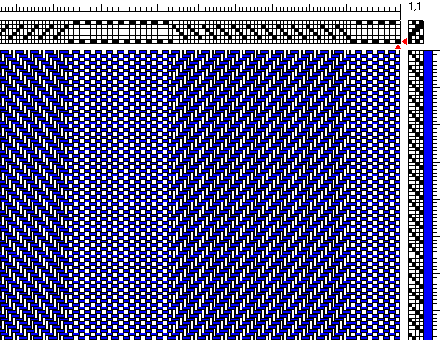 |
After many years of spinning and weaving, I finally took the plunge and decided to make a length of fabric entirely of handspun linen. In May of 2000, we booked a secluded cottage on Washington Island, WI to hide away from rather demanding jobs. I took my trusty Ashford Traditional and a bag of unspun linen hanks I once purchased from Belgium.
At the end of the week, I had produced enough consistent skeins to consider attempting to weave enough fabric for a set of guest towels.
As the summer progressed, I was lucky to find a quieter job, and in September chained and sized the warp pictured on the loom in photo A. For a loom, I chose my Glimakra Victoria, a table loom, now outfitted with treadles.
A closeup of the finished fabric with samples of yarn used in shown in photo B.
Photo C. shows one of the finished towels. The crochet thread is "dark linen" thread from an antique shop.
Photo D. is a closeup showing structure of both towel and trim.
These are not the towels for my guys to wipe their sweaty hands on in the summer time - they will be used sparingly, but it certainly is a superb feeling to have something like this in the cupboard when guests visit. |
Sept. 2003 - Now I've done a second set of handspun towels. This time using the skeins I do when talking to people demonstrating how one spin flax. Naturally these skeins are NOT as even and fine as for the first set of towels, but these DID turn out nicely.
SET AT CA. 32 EPI IN TWILL. WOVEN ON THE OXABACK LOOM.
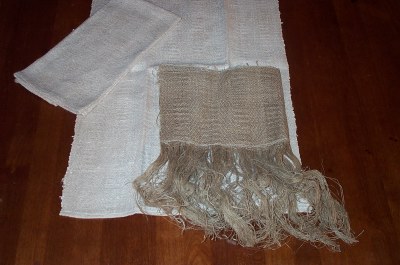 Two finished towels contrasted with the fabric as it looked on the loom. Finishing included cooking (in the washer) the fabric and mangling it two or three times - used soap/washing soda in each wash to lighten the color.
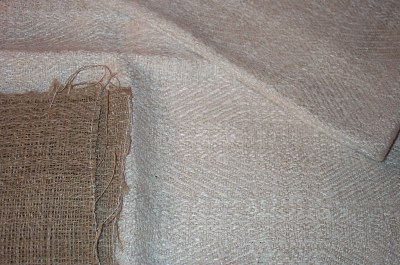 Detail photo showing fabric directly from loom next to finished towels.
Quite a difference. The electric mangle was a big help in getting the cloth and pattern to look nice.
|
